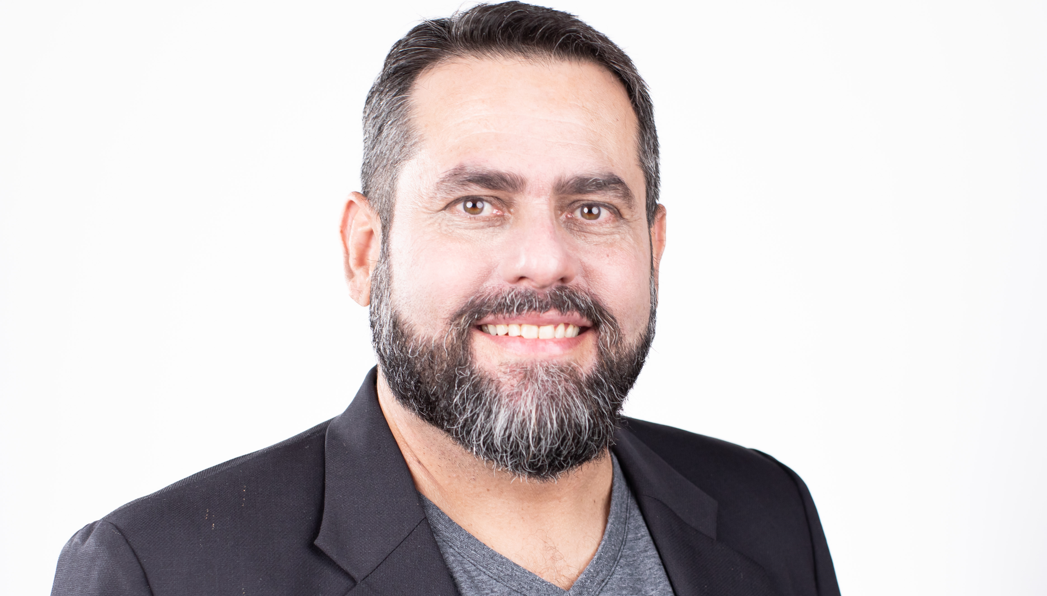
Air Mobility Co-CEO Andre Stein.
Embraer has taken a unique approach since entering the advanced air mobility (AAM) race. After developing electric vertical takeoff and landing (eVTOL) vehicle and urban air traffic management concepts in its EmbraerX incubator, the company in 2021 spun off Eve, which went on to merge with a special purpose acquisition company (SPAC) in May 2022 to become Eve Holding. At the time, the newly minted company announced it had 1,000 commitments for its piloted, four-passenger eVTOL–a total that has since risen to nearly 2,800.
In an exclusive interview with Aviation Week, Eve Co-CEO Andre Stein offered an update on the status of Eve’s namesake eVTOL. An abridged transcript follows.
Aviation Week: Eve had previously indicated a full-scale demonstrator would be flown this year, but that hasn’t happened. Where is the company at in developing its vehicle?
Our focus is really on delivering the aircraft to market, not so much flying demonstrators for the sake of it. We are not so concerned about demonstrating that we can build aircraft. We’ve done that before, and we are in a good cash position on top of that, so there is no reason for us to be fleshing out what we have been doing.
We’re still on track for the type certification process that we announced with [Brazilian regulator] ANAC in February. The primary certification organization is ANAC, and there will be no new certification needed from the FAA–it’s just a validation of the previous process. So that’s what we’re shooting for, and we’re really focused now on our certification and sales campaign.
So, you’re still on track to launch operations in 2026?
Yes, that’s correct. I’d also note that we did start with a later date in mind [than other eVTOL startups] because everything we’ve learned in our half-century developing aircraft at Embraer suggested that a lot of the players in the early days of AAM were way too optimistic. Now, it looks like things overall are moving in that direction. The FAA looks like they’re taking a more conservative direction with their certification basis change [to Part 21.17b from Part 23] last May. But we’re in good shape and very much on track.
What are you thinking about initial launch applications?
The goal is really urban air mobility [UAM]. Some of this market currently is being done by helicopters; some of it doesn’t exist yet. If you look at our backlog, it’s a very diverse customer base. We have helicopter operators like Bristow Group–that’s the largest helicopter operator in the world, and the largest here in Brazil. We also have ridesharing apps like Blade [Air Mobility] who we’ve partnered with in the U.S. and India. And of course there are large airlines like United Airlines and SkyWest, and even leasing companies. It’s a big mix and they all have different business models, but all are related to UAM.
Among the UAM sector, there are different applications, from the airport shuttle to pure commuting–going from Point A to Point B anywhere in the city. Some applications are related to medical evacuation and emergency rescue, sometimes replacing helicopters but also replacing an ambulance or something else. It’s also important to mention that when we’re thinking about early adopters, it could be anyone. This isn’t only about VIP transportation or jobs that the helicopters do today. It’s really about enhancing urban mobility across the board.
What is the rationale behind developing vehicle-agnostic urban air traffic management (UTM) software?
Like with the aircraft, we have access to all this background know-how for the software. Within Embraer Group, there’s a company called Atech that develops traffic management solutions for the whole of the Brazilian aerospace and that gets exported to some other countries too. But it’s a very unique technology that few countries have. So, we’re going to access that technology to create this solution that’s bespoke for UAM. It’s a software that can be used by the operators themselves, and it can also be used by air navigation service providers for pilot communications or flight optimization. When we bundle that full-stack solution with our service and support package, it definitely is a big differentiator for us versus our competition.
What is the scale of the infrastructure investment needed to launch eVTOL operations?
We really don’t need a lot of new infrastructure. The eVTOLs are designed to fit on existing helipads. We need chargers but that’s a smaller investment. We have several partners on the vertiport infrastructure and we’ve announced a few deals for our traffic management software with some of them. And that’s the idea—we want to collaborate with the ecosystem and enable it. The whole ecosystem needs to be vehicle-agnostic. Everyone always says competition is good, but here, it’s actually good. We need movement as an industry to make this happen. And we are seeing that beyond the vehicle manufacturers; the real estate players, the infrastructure players, the airports and so on.
How would you describe the relationship with Embraer?
We have access to all their background IP [intellectual property], and that offers us a lot of leverage. Our fly-by-wire, for example, is in its fifth generation, so we don’t need to learn how to do that. We always can find an expert when we need one. During the development of our aircraft, there are times when we need more people and there are times we need less. Often, we need some very specific expertise for a short period of time, and we have that flexibility with Embraer. We also have access to all their existing infrastructure, including the largest test flight center in the Southern Hemisphere. Embraer has a great track record on actually certifying aircraft, so we feel that makes us a safer bet than our competitors.





